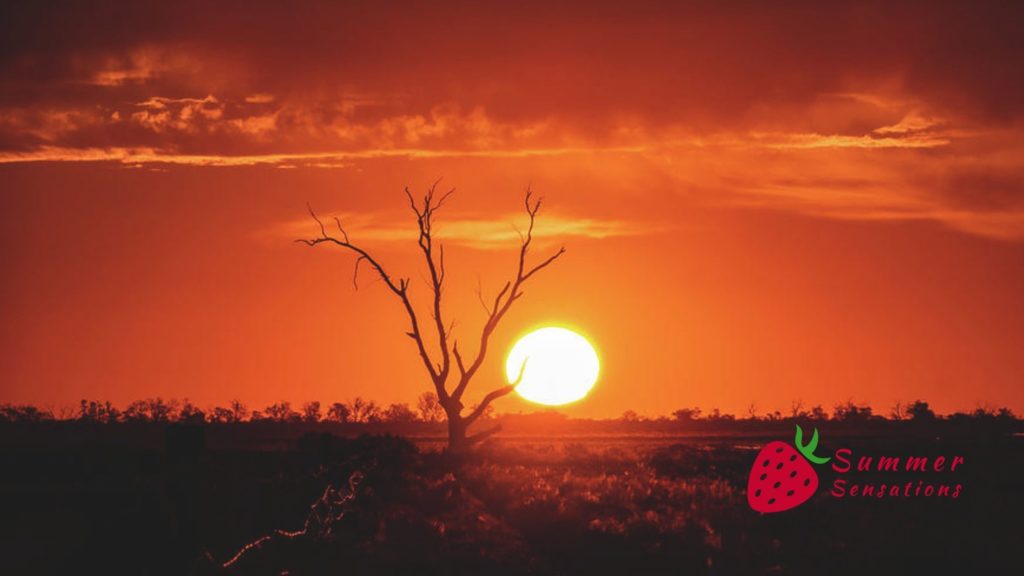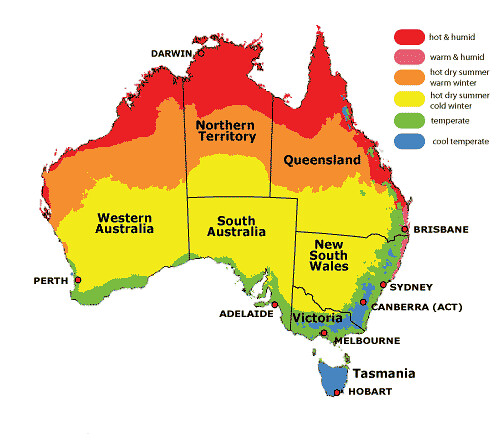
The Australian Outback Summers is huge and spans several climate zones. Most people think of arid regions (deserts) when they think about the Australian Outback and the best time to visit. Arid or semi-arid means an area receives less than 500 mm of rainfall a year. The arid zone makes up 70% of the Australian continent.
Australian Outback Summers Is Huge
The climate across this arid 70 % of Australia is not consistent. Let me say it again the Australian Outback is huge. Even though a lot of Australia is classified as desert the temperatures and amounts of rainfall vary greatly. And not just that, different parts of Australia receive their rain at different times of the year, and they also have different seasons.
There are the wet and dry tropics of the northern Australian Outback, a different Outback climate again. The hottest and driest tours of outback Australia most people consider to be the best time to travel to Australia is NOT the best time to visit the Outback. You’ll probably have to compromise somewhere. I will give you an overview of the climate regions so you get a general idea of what the weather in different parts of the Australian Outback is like at different times of the year.
You can find more detailed climate information in other parts of this website, where I talk about specific places and attractions. For example, I explain in detail what is the best time to visit Ayers Rock/Alice Springs or the best time to visit Kakadu.

The arid regions are the areas identified as the zones with hot dry summers, covering most of inland Australia. As you can see there are two arid Outback climate zones, one with warm or mild winters and one with cool winters. In the southernmost regions, the winters are seriously cold.
Both zones are best visited during the Australian winter that’s when it’s summer in Europe or the US. The Outback climate is such that during winter warm, dry, and sunny days are virtually guaranteed.
Ayers Rock & Alice Springs Are Zone Cool Winters Or Hot?
Ayers Rock & Alice Springs days will be warm, even hot, but the nights will be cold! That’s because you are in a desert. The desert climate is characterised by extremes, hot days, and freezing nights. So if you plan any camping make sure your sleeping bag is a warm one. July is usually the coldest month, and frosts occur about half of the nights in July and August.
Autumn and spring are a good time, too, but as you get closer to the summer months it gets hot. If you travel in these areas in summer you best schedule any activities for the very early mornings. And always, always take a water bottle with you.
I can’t emphasize this enough but drink a lot of water, not sweet sodas. Drinking enough water is the single most important thing you can do to feel well in higher temperatures! It makes all the difference.
South Australian Outback Climate
Having said that, the further south you go the more bearable the temperatures will be, even in summer. Everybody feels different about heat, and we would never venture too far south in winter.
One more thing, social media marketing involving iconic imagery the driving distances in Outback Australia is huge and if you are driving you will spend a lot of time in your vehicle. If you want to drive through Outback Australia in summer do yourself a favour and make sure the car has air conditioning.
If you plan to get off the beaten track you may want to avoid the summer months in the northern parts. Rain at this time of the year is unpredictable. It may not rain for years, but if it rains it pours. Unsealed roads and any roads off the beaten track that are unsealed can become impassable for days or weeks. At least make sure you keep a very close eye on the weather forecasts.
Northern Australia Outback Climate
Most of Northern Australia is considered to be Outback, the climate here is tropical though. Not what you usually associate with the Australian Outback. The northern Australian Outback has a distinct dry and wet season. The dry season from April/May to September/October is considered to be the best time to visit. It certainly is the most comfortable time. The day temperatures are pleasant and the nights are mild. The beginning and end of the dry can be a little hot and humid. On the plus side, there are fewer tourists and lower prices.
The wet season is hot and humid. Thunderstorms are frequent during the first half, and cyclones and extended flooding are a threat in the second half. November, the build-up for the monsoon, is probably the worst time with the highest temperatures and little or no cooling rains.
The wet is not a good time for the average tourist, but if you are adventurous, can handle the heat, and are flexible with your schedule you could be in for the experience of a lifetime. This might surprise you, but the Wet is considered by many locals to be the best time of the year in the northern Outback climate.
